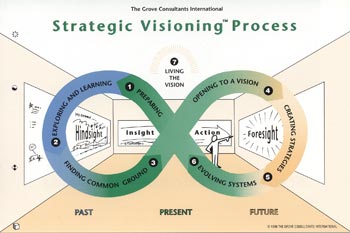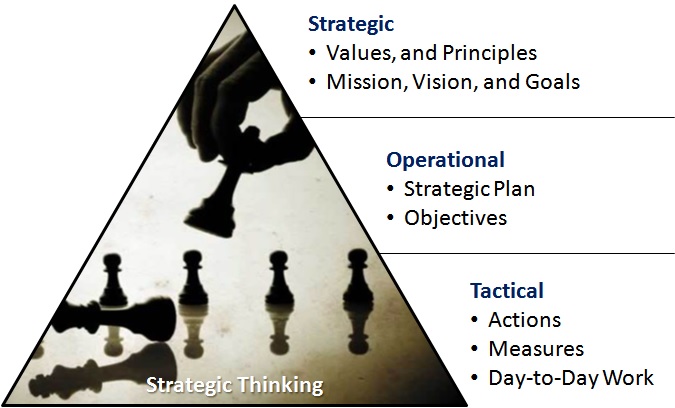A lot of good leaders out there will tell you that they have an open door policy. They will share with you, when talking about communication in their organization, how they have instituted an open door policy to facilitate communication in their organization. “My door is always open,” they will say.
But is it really?
How many employees ‘walk through your open door’ to talk to you on a regular basis?
If your answer is a low number or none–aside from the senior leaders in your organization–then maybe you should ask yourself if you really have an open door?
Now an open door policy really is a misnomer, because the reason leaders have offices and others have cubicles is so that they can have closed door meetings. These are either discussions where they want to discuss things in private or they want to have a meeting without being bothered. This way, leaders can have a series of meetings without finding a conference room all the time. Makes sense.
But then their door really isn’t ‘open’ all the time, now is it? But an open door policy really doesn’t mean that your door is actually always open when you come by or that you are free to walk in at any time. An open door policy is really about how approachable you have made yourself.
Your open door policy is really about a level of trust and honesty you portray in your organization and a level of openness to talk freely to employees. It’s not about actually having an open door.
Some things to consider to promote more of an open door culture in your office is to get up from your desk on a regular basis and walk around talking to people that you normally would not.
Take the door to them so to speak.
Get to know people by name. Know if they are married and have kids, are they going to school or do they have hobbies, if they like sports or volunteering, ect. Basically, find out a little more about them that demonstrates that they are more like you than you or they realized.
Sure, probably, as the leader, you make more money, park closer to the front door, and probably live in a different part of town, but in many ways you are very much alike. I think that people forget this.
Everyone from the lowest level employee to the highest paid CEO are the exact same–a human. They’ve just had different experiences in life that have led them to where they are today and the CEO now has access to way more information than the other employee. If you treat everyone like a fellow human being and not an employee, you will promote an open door policy.
I work for a guy that loves coffee. He’s very good at management by walking around. He can often be seen, especially in the morning and late afternoon, around the office talking to people. But he made his actual door more approachable one simple way…
In the front office, he put in an instant coffee maker and keeps it full of different coffees, teas, creamers, and sweeteners. When his door is open, his desk faces straight at the coffee maker. The coffee is open and free to anyone in the office and people often come by to get some. If he’s not busy, the door is open, and he’s in the office, it is not uncommon that he say hi or even get up and come get a cup of coffee for himself. He even has a time blocked on Thursday, that he tries to keep open for people to come get a cup of coffee and sit down in his office and simply talk.
Think about the simplicity of an open door. It’s not about the policy, but how you promote open and honest communication and make yourself approachable.


 Leadership is a dying art in the world today. The great leaders of the past are found few-and-far between these days. There are some that have been fairly successful that have rose to an iconic status, but have they been truly great leaders or just really successful at running something?
Leadership is a dying art in the world today. The great leaders of the past are found few-and-far between these days. There are some that have been fairly successful that have rose to an iconic status, but have they been truly great leaders or just really successful at running something?


 Leadership is a dying art in the world today. The great leaders of the past are found few-and-far between these days. There are some that have been fairly successful leaders that have rose to an iconic status, but have they been truly great leaders or just really successful at running something?
Leadership is a dying art in the world today. The great leaders of the past are found few-and-far between these days. There are some that have been fairly successful leaders that have rose to an iconic status, but have they been truly great leaders or just really successful at running something?

 Leadership is a dying art in the world today. The great leaders of the past, George Washington, Winston Churchill, Alexander the Great, Martin Luther King, even Adolph Hitler, are found few-and-far between these days. There are some that have been fairly successful, like Steve Jobs for instance, that have rose to an iconic status, but have they been truly great leaders or just really successful at running something?
Leadership is a dying art in the world today. The great leaders of the past, George Washington, Winston Churchill, Alexander the Great, Martin Luther King, even Adolph Hitler, are found few-and-far between these days. There are some that have been fairly successful, like Steve Jobs for instance, that have rose to an iconic status, but have they been truly great leaders or just really successful at running something? Start with a Strategic Mindset.
Start with a Strategic Mindset. Harness the Power of Positive Thinking.
Harness the Power of Positive Thinking. Establishing Key Interpersonal Skills.
Establishing Key Interpersonal Skills. Developing a Personal Business Focus.
Developing a Personal Business Focus. Your Health and the Leader Within You.
Your Health and the Leader Within You. Volunteerism — The Personal Training Ground for Personal Development.
Volunteerism — The Personal Training Ground for Personal Development.
 Leadership is a dying art in the world today. The great leaders of the past, George Washington, Winston Churchill, Alexander the Great, Martin Luther King, even Adolph Hitler, are found few-and-far between these days. There are some that have been fairly successful, like Steve Jobs for instance, that have rose to an iconic status, but have they been truly great leaders or just really successful at running something?
Leadership is a dying art in the world today. The great leaders of the past, George Washington, Winston Churchill, Alexander the Great, Martin Luther King, even Adolph Hitler, are found few-and-far between these days. There are some that have been fairly successful, like Steve Jobs for instance, that have rose to an iconic status, but have they been truly great leaders or just really successful at running something?
 The first step in change management is to define the “burning platform.” If you’re waiting for the platform to catch fire, you’re too late.
The first step in change management is to define the “burning platform.” If you’re waiting for the platform to catch fire, you’re too late.